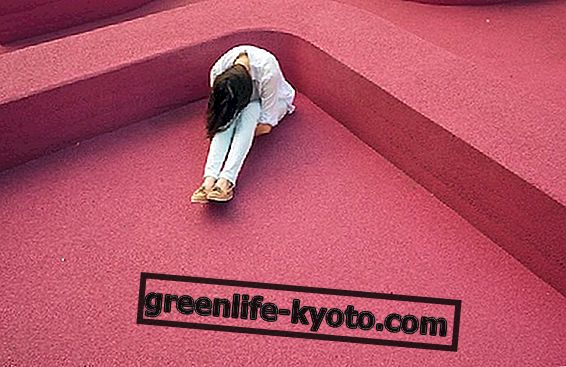Curated by Maria Rita Insolera, Naturopath
Separation anxiety is a phenomenon that can occur at particular moments in the life of a dog or cat and is recognized by particular attitudes such as destructive behavior, incessant barking and recurring complaints. This disorder can be solved with natural remedies. Let's find out better.

What is separation anxiety
Separation anxiety is a behavioral disorder characterized by signs of anxiety and particular attitudes, including destructive ones. This occurs, in particular, when the dog or cat is alone at home, or outside, and in any case when it is separated from its owner.
Symptoms of separation anxiety
Some symptomatic manifestations of the state of separation anxiety are: destruction of furniture, clothing, walls, doors and tools (in this case it is destructive behavior), incessant barking, inappropriate elimination of feces and / or urine (anxiety favors the opening of the sphincters) and recurrent moans.
The triggers of this type of anxiety can be different. Among the most important we remember:
- Very affectionate animals and dependent on the owner,
- The type of bond between dog and master;
- The return to a situation of solitude after a long period of cohabitation with the owner: weekends, trips, summer holidays etc .;
- Recent adoptions: for some days some animals live with anxiety about having to go from an animal shelter to a home; in the shelter they live with other animals and never remain alone, while at home they do not always have company.
Dog separation anxiety: cures and natural remedies
Bach flowers are mainly used in the treatment of a dog's separation anxiety.
When starting such therapy it is necessary to pay attention to the dog-master relationship, because in the first place it is necessary to change certain dog habits and secondly to help the owner understand that his dog is not a human being and should not be treated as such, if he does not want to perpetuate the pathology of separation anxiety.
It is also necessary to treat both the dog and the owner with flower essences . The formula that treats separation anxiety has the main objective of lowering the level of anxiety and stress of the dog that suffers from loneliness and of managing the physical manifestations that derive from it: hyperventilation, acceleration of cardiac rhythm, etc.
Moreover, it is necessary to modulate his need to always be in company and his excessive attention request. The Bach flower arrangement to use is as follows:
- Agrimony (anxiety)
- Impatiens (acceleration)
- Sweet Chestnut (extreme anguish)
- Vervain (exaggerated expression, hyperactivity)
- White Chestnut (repetition)
- Chicory (possessiveness)
- Heather (request for attention)
- Rock Rose (panic) .
The dosage is 4 drops 4 times a day with direct application in the mouth (if possible). If after 2-3 weeks of treatment the dog continues to present the same problematic behavior, it is recommended to add to the previous preparation Rock water (resistance to change) and Chestnut Bud (learning), instead of Sweet chestnut.
Bach flowers for the dog: when and how to use them
Cat seperation anxiety: cures and natural remedies
As with the dog, Bach flowers are also used in the treatment of cat separation anxiety.
Before starting the therapy it is necessary to pay attention to the relationship cat-master, to change certain habits of the cat and secondly to help the owner to understand how to treat his animal, if he does not want to perpetuate the pathology of separation anxiety.
The flower essences must be taken by both the cat and the owner. The formula that treats separation anxiety has the main objective of lowering the level of anxiety and stress of the cat that suffers from loneliness and of managing the physical manifestations that derive from it: hyperventilation, acceleration of cardiac rhythm, etc.
Moreover, it is necessary to modulate his need to always be in company with and his excessive request for attention. The Bach flower arrangement to use is the following: Agrimony (anxiety) + Impatiens (acceleration) + Sweet Chestnut (extreme anxiety) + Vervain (exaggerated expression, hyperactivity) + White Chestnut (repetition) + Chicory (possessiveness) + Heather (request of attention) + Rock Rose (panic).
The dosage is 4 drops 4 times a day with direct application in the mouth (if possible). If after 2-3 weeks of treatment the cat continues to present the same problematic behavior, it is advisable to add to the previous preparation Rock water (resistance to change) and Chestnut Bud (learning), instead of Sweet chestnut.













